
iCloud Data Recovery - Understanding iCloud Storage vs. iPhone Storage
Aug 27, 2025 • Filed to: Data Recovery Solutions • Proven solutions
Have you seen the iPhone "Storage Full" alert? Or perhaps you lost important images and wondered if iCloud could save them? Users sometimes confuse iCloud with iPhone storage, which can lead to data recovery issues.

If your phone breaks or is misplaced, only iCloud backups protect your info. If you just use your iPhone's memory, you might lose everything. This article will simplify the difference between icloud storage and iphone storage, teaching you how to manage space, backup data, and recover deleted files using tools like Dr.Fone - Data Recovery (iOS).
Part 1. Understanding iCloud and iPhone Storage
People often question what the "Storage Full" signal signifies. Let's clear this confusion by understanding the difference between iCloud and iPhone Storage:
1. iPhone Storage (Local Storage)
iPhone Storage is iPhone's internal memory space. The fixed capacities are 64GB, 128GB, 256GB, 512GB and 1TB (depending on the model). This is where your applications, images, videos, texts, and system data is stored.
To check your iPhone storage: Open "Settings > General > iPhone Storage."
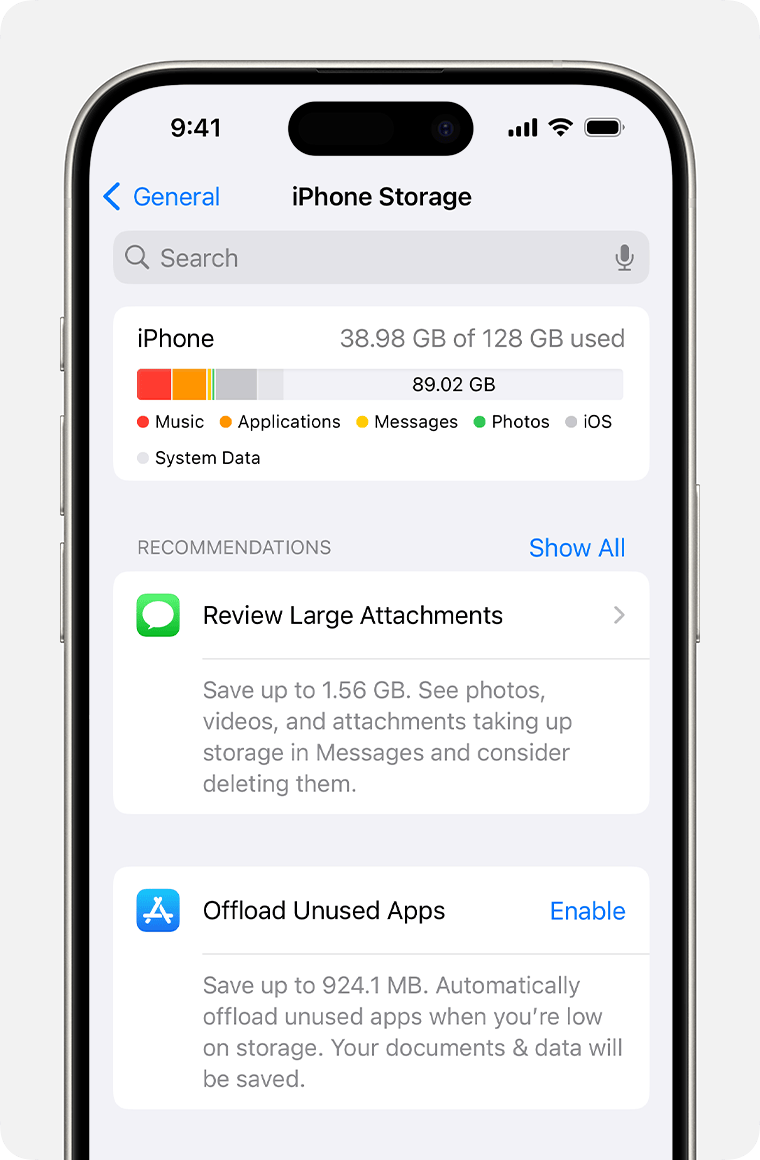
2. iCloud Storage (Cloud Storage)
iCloud is Apple's online storage. It protects backups, images, information, and apps in the cloud. By default, 5GB is free. Paid subscriptions offer 2TB, or Apple One packages add capacity.
Key features:
- iCloud Backup: Saves your complete device for recovery.
- iCloud Photos: iCloud Photos syncs photos among devices.
- iCloud Drive: File storage.
Part 2. Key Differences: iCloud Storage vs. iPhone Storage
Let's simplify iCloud and iPhone storage to avoid confusion. Knowing the difference between these two storage formats helps prevent the "Storage Full" signal and data loss.
| Factor | iPhone Storage | iCloud Storage |
|---|---|---|
| Location & Access | On your device (works offline) | Remote cloud (needs internet) |
| Capacity | Fixed (e.g., 64GB, 128GB, 256GB, 512GB and 1TB) | Flexible (5GB free, up to 2TB) |
| Primary Use | Runs apps, stores local files | Backups, syncing, photo library |
| Security | Device security (Face ID/Touch ID) | End-to-end encryption |
| Cost | One-time device cost | Monthly subscription starting at $0.99, going up to $59.99 |
In-depth analysis
1. Accessibility
The major difference between iPhone and iCloud storage is accessibility. iPhone storage is device-specific. You can access files and programs offline. iCloud backups require internet access because they're cloud-based. An advantage? You can view your files on any Apple device or iCloud.com.
2. Backup Dynamics
When it comes to Backup, iCloud wins. Wi-Fi and charging automatically back up your phone. This is particularly important for iPhones that are lost or damaged. Manual iTunes or Finder backups are required for iPhone storage.
3. Cost-efficiency
Cost also influences the icloud versus iphone storage issue. Buying a new iPhone to increase storage is pricey. However, iCloud provides customizable membership rates starting at $2.99/month for 200GB. This is cheaper than a new iPhone for storage.
Part 3. iCloud Data Recovery: How Storage Type Impacts the Process
Knowing the difference between iCloud and iPhone storage is crucial for data recovery. The way you use it depends on where your files are—on your iPhone or in iCloud. Follow the steps below:
1. How to Recover from iPhone Storage
Applications, photos, videos, and system data are on the iPhone. If you accidentally delete something, recovery options are limited compared to iCloud. What you can do:
Common Scenarios:
- Deleted photographs or communications by accident.
- Your app crashed and deleted data.
Limitations:
Lack of data backup may result in irreversible loss. Unlike iCloud, iPhone storage doesn't back up automatically. Full recuperation generally requires third-party technologies, such as Dr.Fone.
Methods to Recover Data:
a) Recently Deleted Folder:
Check the "Recently Deleted" folder for images and notes. Deleted things last 30–40 days. The steps are below:
Step 1. Select "Photos > Albums > Recently Deleted."
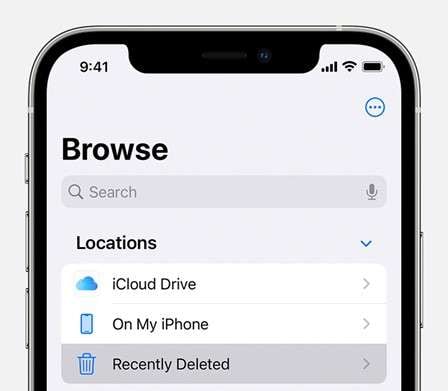
Step 2. Choose items to restore.
Step 3. Tap "Recover."
iCloud.com lets you accomplish this using iCloud Photos:
Step 1. Visit "iCloud.com > Photos > Albums > Recently Deleted."
Step 2. Choose "Items > Recover."
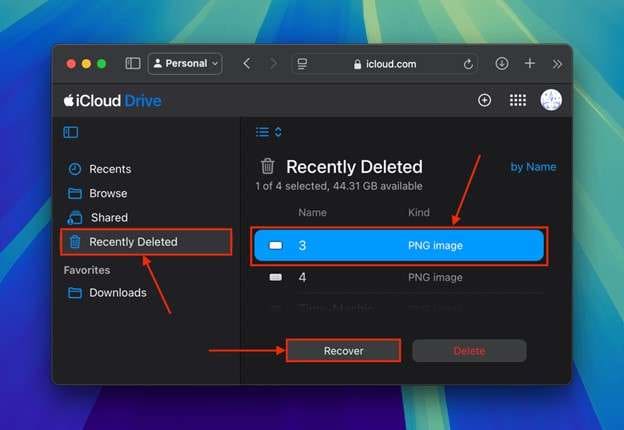
b) Restore from iTunes Backup (or Finder on Mac):
Follow these instructions to restore a local backup using iTunes Backup or Finder on Mac:
Step 1. Launch "iTunes/Finder" (Windows/macOS Mojave/Catalina+).
Step 2. USB-connect your iPhone.
Step 3. Click "Device icon > Summary > Restore Backup."
Step 4. Select the latest backup and confirm.
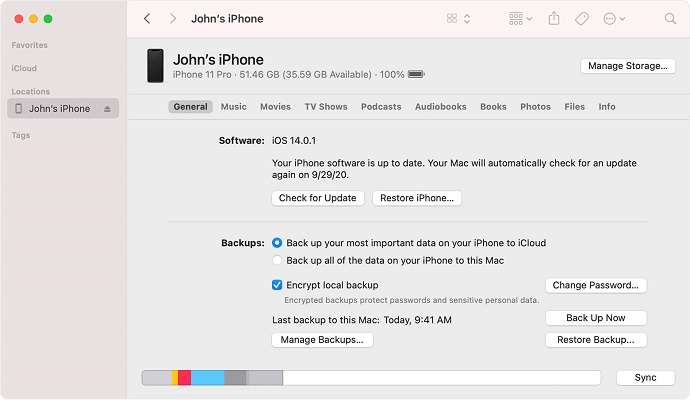
Note: This erases iPhone data and restores the backup.
2. Recovering from iCloud Storage:
Let's look at the relevance of iCloud. When charging and connected to Wi-Fi, iPhones backup to iCloud daily. Cloud storage retrieves lost, stolen, or damaged phone data.
Why iCloud Recovery is Better:
- There's no need for cables.
- Automated backups.
- Any-device access.
Scenario:
- Your iPhone is lost or damaged.
- Your smartphone is stuck after the iOS upgrade failed.
How to Restore iCloud Backup on a New iPhone:
Step 1. Connect to Wi-Fi and boot your new iPhone.
Step 2. Choose "Restore from iCloud Backup" from the "Apps & Data" screen.
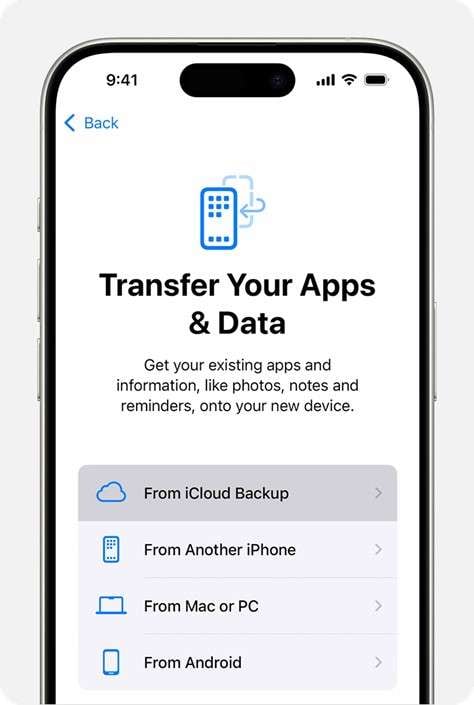
Step 3. Log in using your Apple ID. Choose your latest backup.
Step 4. Let the data download and setup finish. Log in to iCloud.com to restore files or photographs.
Constraints:
- Needs internet.
- iCloud backups only exist if your membership is current (30-day grace period).
3. Comprehensive Recovery Solution: Using Dr.Fone - Data Recovery
iCloud and iPhone storage are suitable for basic recovery, but they are limited. For example:
- iCloud restores the whole backup, not individual files.
- The recent deletion lasts 30 days.
- Data restoration is difficult on damaged devices.
Here comes Dr.Fone - Data Recovery (iOS). Selective restore and support for 18+ data types make it a top iPhone and iCloud recovery tool.

Dr.Fone - Data Recovery (iOS)
The Best Tool to Recover From Any iOS Devices!
- Designed with the technology of recovering files from iTunes, iCloud or phone directly.
- Capable of recovering data in serious scenarios like device damage, system crash or accidental deletion of files.
- Fully supports all the popular forms of iOS devices.
- Provision of exporting the files recovered from Dr.Fone - Data Recovery (iOS) to your computer easily.
- Users can speedily recover selective data types without having to load the entire chunk of data altogether.
Why Choose Dr.Fone Over Native Tools?
- Use previous iCloud backups without restoring.
- Recovering lost app data not supported by Apple.
- Extend recovery beyond 30 days.
Step-by-Step iCloud Data Recovery with Dr.Fone.
Step 1. Open Dr.Fone after downloading. Go to "Toolbox > Data Recovery," then "Recover Data from iCloud."

Step 2. Verify your Apple ID with two-factor authentication.
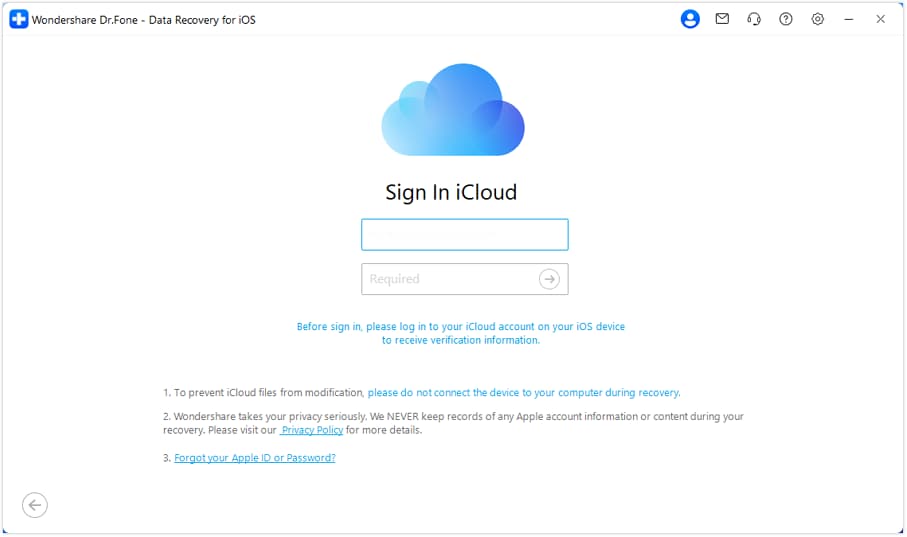
Step 3. Let Dr.Fone download your backup by selecting file kinds (pictures, messages, WhatsApp, etc.).
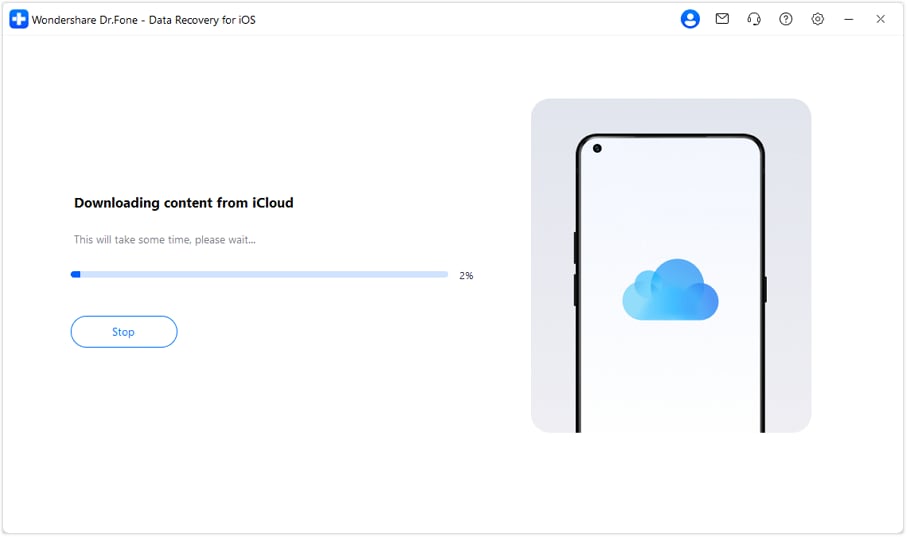
Step 4. Review recovered files and recover or export them to your iPhone or PC.
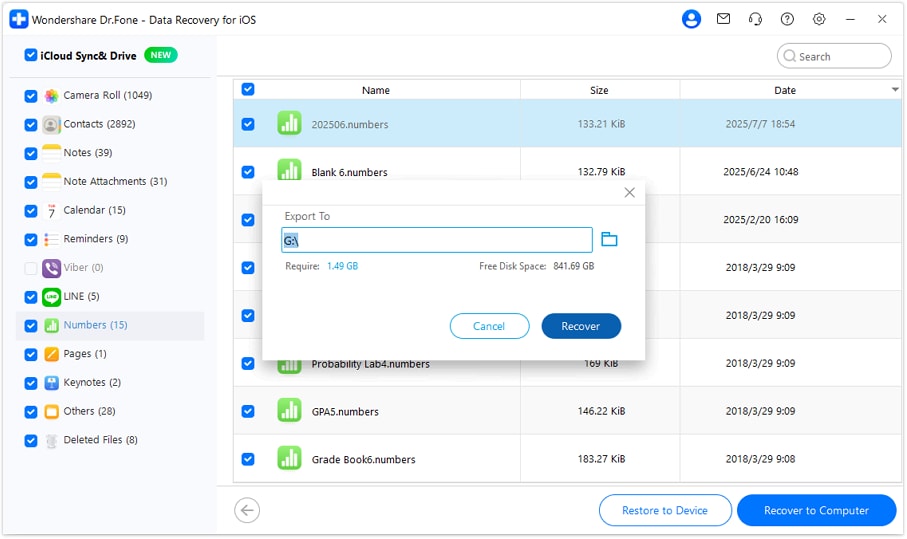
Why iCloud vs. iPhone Storage Matters
Many iPhone users mistakenly confuse iPhone storage and iCloud, and lose data because they assume backups happen automatically. The cloud-based iCloud syncs and recovers, whereas iPhone storage is fixed and local. Knowing the difference between iCloud and iPhone storage helps you choose:
- Using iCloud Photos and removing useless applications frees your iPhone storage.
- Back up iPhone to iCloud for file restoration in case of loss or damage.
- Combine for optimal security and convenience.
Part 4. Strategic Integration: Synergy for Optimal Data Recovery
Planning is essential for storage and data protection. Managing iPhone and iCloud storage is important. This reduces hazards and speeds recovery. How to do this:
Backup Best Practices
First, learn the difference between iCloud and iPhone storage. Store active applications and files on your iPhone's storage. Enable iCloud Backup for full system backups. Cloud storage protects your essential data even if your device is lost or damaged.
Proactive Management
1. iPhone Storage Optimization
Space is limited on your iPhone. Keep things functioning smoothly:
- Clean Photos and Videos: Use MobileClean - Photo Cleaner to eliminate duplicates and similar images from your photos and videos.
- Merge Contacts: Decrease clutter by combining contacts.
- Enable "Offload Unused Apps": Go to Settings > General > iPhone Storage to conserve space without losing app data.
2. iCloud Storage Management
Managing iCloud storage versus iPhone storage requires effective organization of cloud space.
- Remove obsolete backups: Go to "Settings → [Your Name] → iCloud → Manage Account Storage."
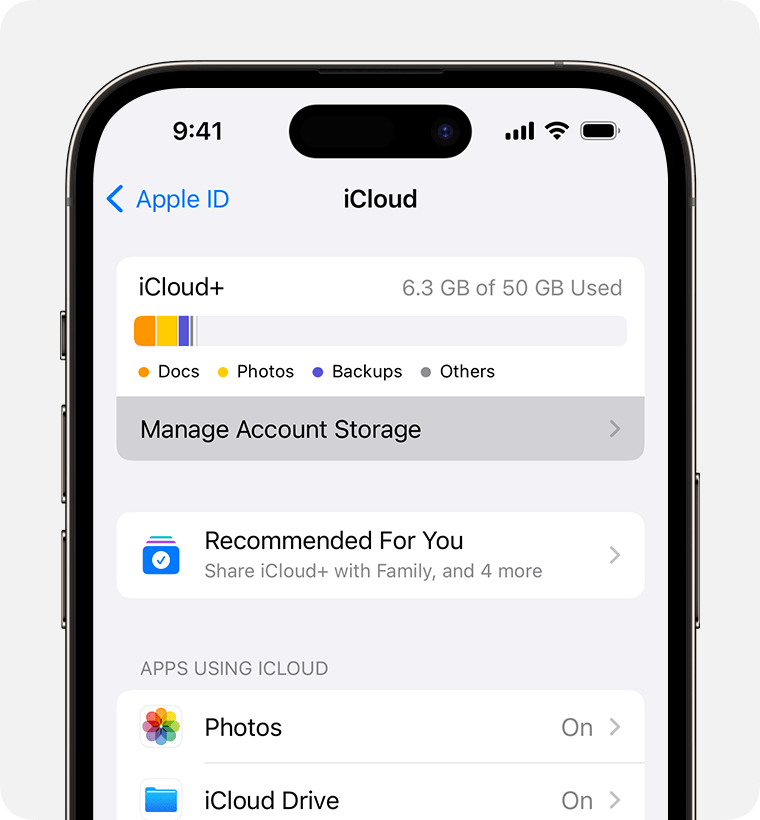
- Move non-essential data to Google Drive or Dropbox for a lower cost.
Recovery Workflow
Even well-managed devices can fail or delete files accidentally which is why a recovery plan is necessary. You need to regularly sync contacts, texts, and photographs to iCloud.
Conclusion
Knowing the difference between iCloud storage versus iPhone storage protects and speeds up your data management. For apps and regular use, iPhone storage is ideal, but iCloud serves as your essential backup. With both working together, you get the finest combination of speed, access, and security — the perfect balance of iCloud storage vs. iPhone storage capabilities.
Accidental deletion, device failure, and crashes can still cause data loss, highlighting why understanding iCloud storage vs. iPhone storage is crucial. This is why Dr.Fone - Data Recovery (iOS) is important. Photos, texts, WhatsApp chats, and more are restored without overwriting your device. Just a few clicks restore iCloud or iTunes backups. Keep your Storage organized, back up frequently, and be prepared. Dr.Fone safeguards your data in the event of disasters.
iCloud Manage
- iCloud Delete
- iCloud How-Tos
- 1. Get More iCloud storage
- 2. Save Documents in iCloud
- 3. Access iCloud Photos
- 4. Access Your Notes on iCloud
- 5. Cancel iCloud Storage Plans
- 6. Sharing iTunes Store Purchases
- 7. Reset iCloud Email on iPhone / PC
- 8. Set Up iCloud Account on Android
- 9. iCloud Two-Factor Authentication
- 10. See Pictures Stored in iCloud
- 11. Buy More iCloud Storage
- 12. See What Is In iCloud Storage
- iCloud Issues
- 1. iCloud Backup Failed Issue
- 2. Not Enough iCloud Storage
- 3. iCloud Contacts Not Syncing
- 4. iCloud Photos Not Syncing
- 5. iPhone Couldn't Be Activated
- 6. iPhone Backup with iTunes/iCloud
- 7. Stuck on Updating iCloud Settings
- 8. iPhone Won't Backup to iCloud
- 9. Notes App Not Syncing with iCloud
- 10. Syncing with iCloud Paused
- iCloud Tricks
- 1. iCloud Tips and Tricks
- 2. Recover iCloud Password
- 3. Disconnect iPhone from iCloud
- 4. Retrieve Contacts from iCloud
- 5. iCloud Alternative For iPhone/iPad
- 6. Bypass iCloud Activation with IMEI
- 7. Bypass Activation Lock on iPhone
- 8. Change iCloud Account on iPhone
- 9. Get Rid of the Repeated iCloud Sign
- 10. Download Videos from iCloud
- 11. iCloud Storage vs. iPhone Storage
- 12. Manage iCloud Storage on iPhone/iPad
- ● Manage/transfer/recover data
- ● Unlock screen/activate/FRP lock
- ● Fix most iOS and Android issues
- Manage Now Manage Now Manage Now

















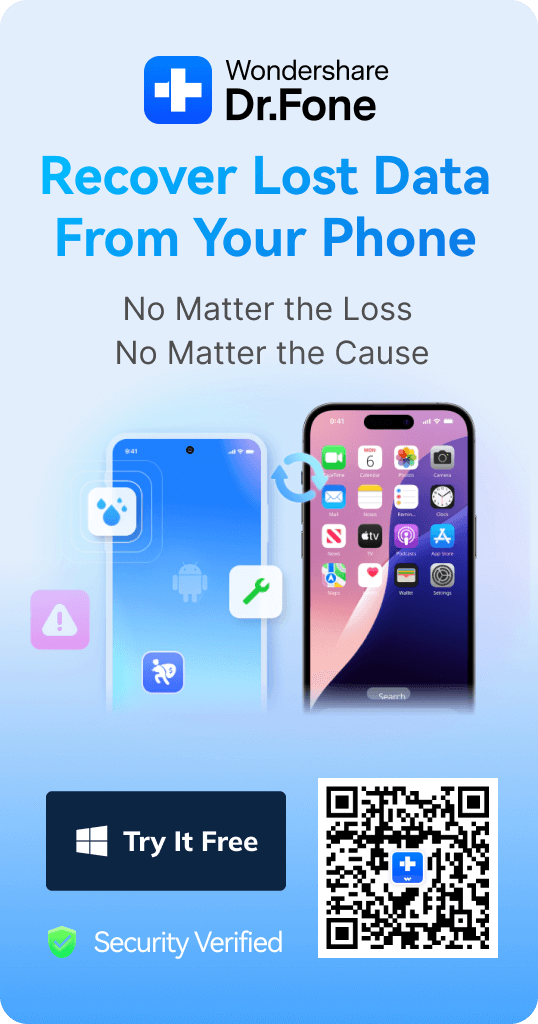

James Davis
staff Editor